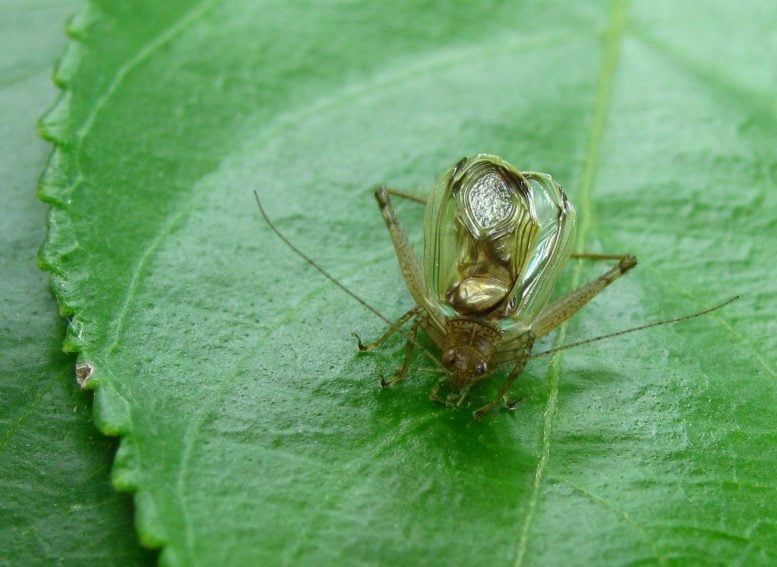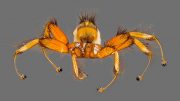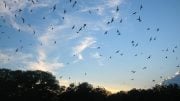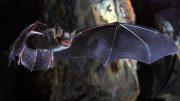Researchers have uncovered the highly efficient strategy used by a group of crickets to distinguish the calls of predatory bats from the incessant noises of the nocturnal jungle. The findings, led by scientists at the Universities of Bristol and Graz in Austria and published in Philosophical Transactions of the Royal Society B, reveal that crickets eavesdrop on the vocalizations of bats to help them escape their grasp when hunted.
Sword-tailed crickets of Barro Colorado Island, Panama, are quite unlike many of their nocturnal, flying-insect neighbors. Instead of employing a variety of responses to bat calls of varying amplitudes, these crickets simply stop in mid-air, effectively dive-bombing out of harm’s way. The higher the bat call amplitude, the longer they cease flight and further they fall. Biologists from Bristol’s School of Biological Sciences and Graz’s Inst of Zoology discovered why these crickets evolved significantly higher response thresholds than other eared insects.
Short video showing a small rainforest cricket performing the same flight stop in response to a bat call and two katydid calls.
Within the plethora of jungle sounds, it is important to distinguish possible threats. This is complicated by the cacophony of katydid (bush-cricket) calls, which are acoustically similar to bat calls and form 98 percent of high-frequency background noise in a nocturnal rainforest. Consequently, sword-tailed crickets need to employ a reliable method to distinguish between calls of predatory bats and harmless katydids.
Responding only to ultrasonic calls above a high-amplitude threshold is their solution to this evolutionary challenge. Firstly, it allows the crickets to completely avoid accidentally responding to katydids. Secondly, they do not respond to all bat calls but only sufficiently loud ones, which indicates the bat is within seven meters of the insect. This is the exact distance at which a bat can detect the echo of the crickets, which ensures the crickets only respond to bats that have already detected them when trying to evade capture.
This type of approach is rare in nature with most other eavesdropping insects living in less noisy environments being able to rely on differences in call patterns to distinguish bat predators.
Dr. Marc Holderied, senior author on the study from Bristol’s School of Biological Sciences, explained: “The beauty of this simple avoidance rule is how the crickets respond at call amplitudes that exactly match the distance over which bats would detect them anyway — in their noisy world it pays to only respond when it really counts.”
Reference: “Decision making in the face of a deadly predator: high-amplitude behavioural thresholds can be adaptive for rainforest crickets under high background noise levels” by Heiner Römer and Marc Holderied, 18 May 2020, Philosophical Transactions of the Royal Society B.
DOI: 10.1098/rstb.2019.0471
The study was supported by the Austrian Science Foundation and Leverhulme Trust.










Be the first to comment on "Crickets Eavesdrop on Bat Echolocation Calls and Drop From the Sky to Evade Capture"